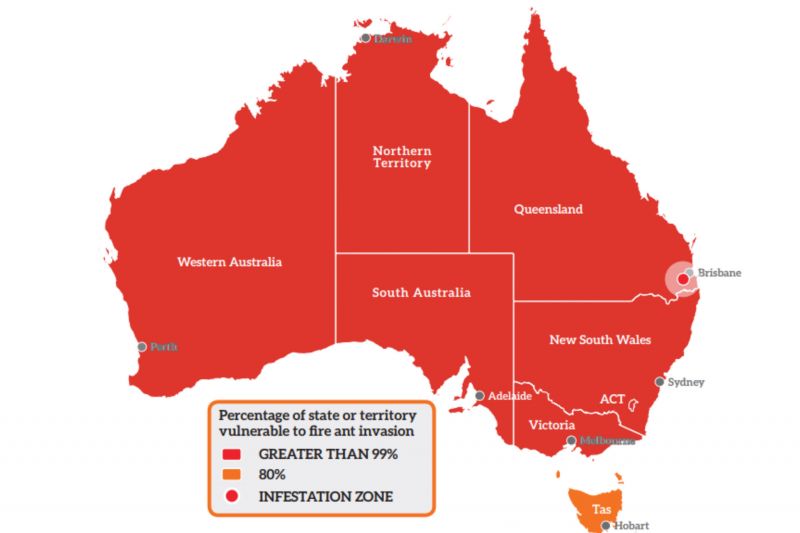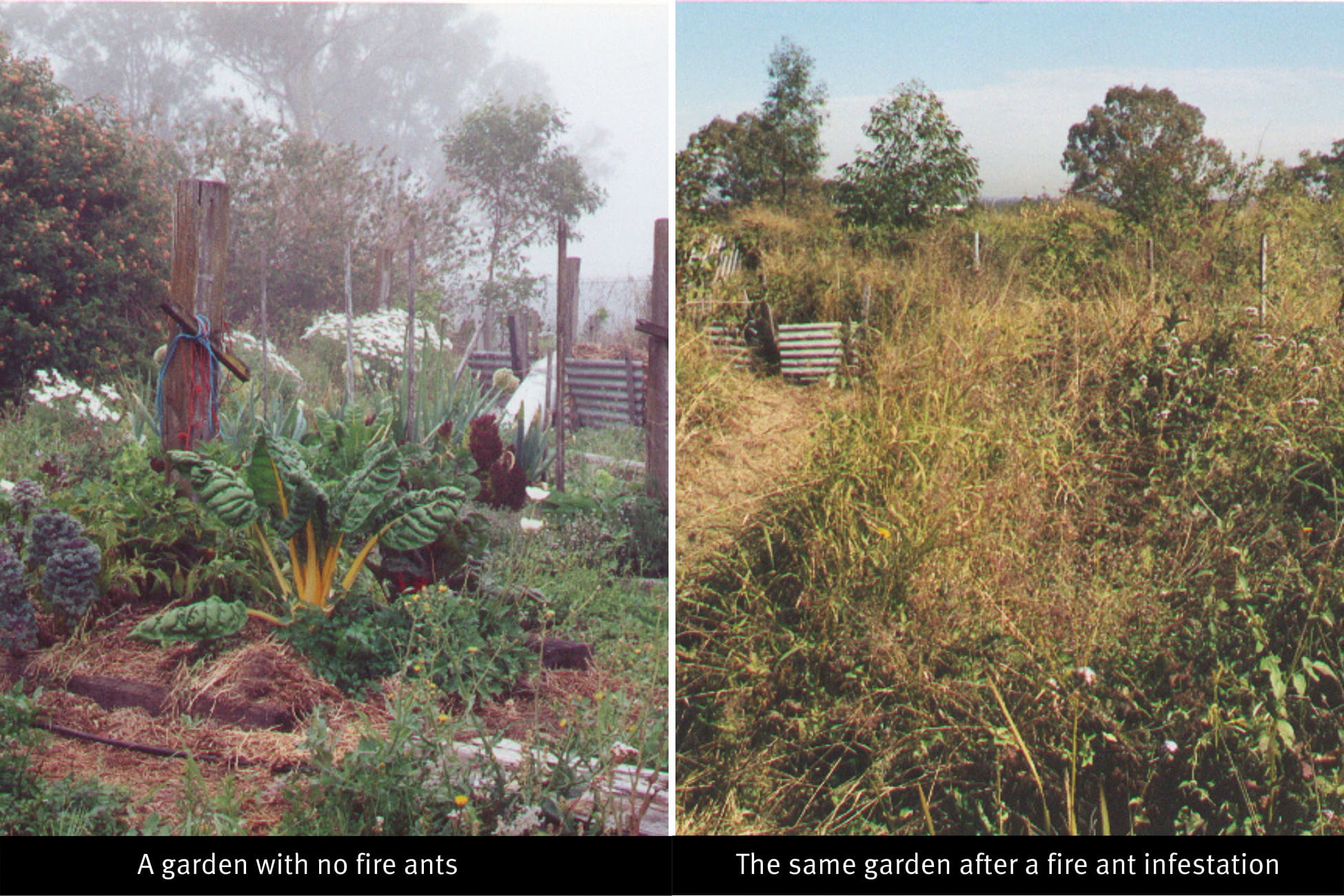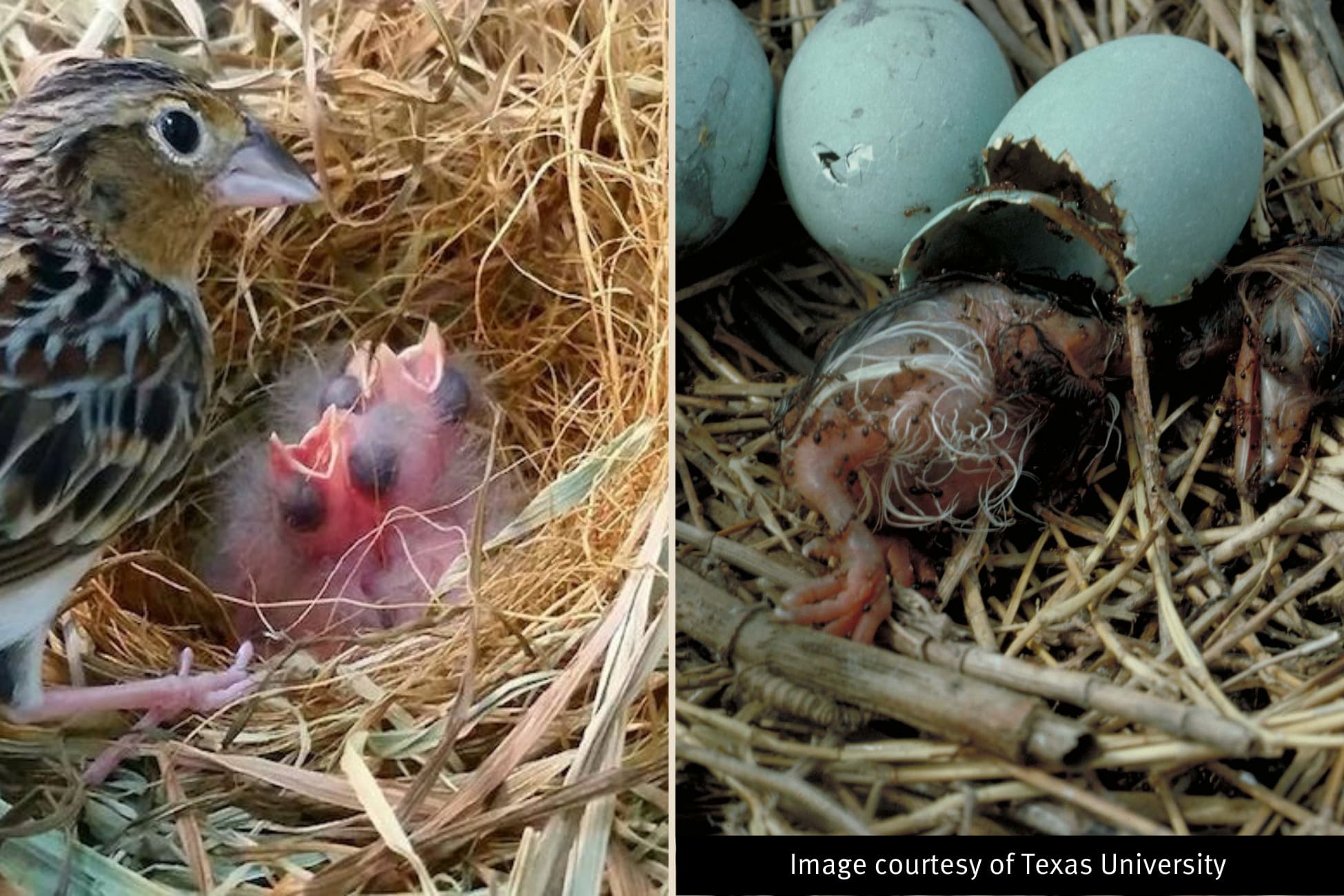Fire ants have the potential to inhabit most areas of Australia, which could have disastrous consequences for our environment.
They have caused significant environmental problems in countries where they are established.
On this page
Environmental impacts in Australia
Fire ants have the potential to inhabit most areas of Australia, as far north as Tropical North Queensland.
Fire ants can affect our environment as they:
- feed on fauna that nests or feeds on the ground, including insects, spiders, lizards, frogs, birds and mammals
- can displace or eliminate some native species.
- eat and damage seeds, possibly causing major ecosystem changes over time
- predate or disturb the insects and animals that pollinate native plants, which may also cause long-term changes to the vegetation of our bushland areas
- attack bird species that have ground-based feeding habits, and species that occupy areas within 1m above ground may also be at risk.
The reduction in the biodiversity of Australian native fauna and flora is listed as a key threatening process under the Commonwealth Environment Protection and Biodiversity Conservation Act 1999 (EPBC Act).
Environmental impacts overseas
Fire ants are not only a problem in Australia. They are widespread in the United States.
Regions that are not yet home to the pest are very concerned about the impacts fire ants would have on their ecosystem.
You can read about Hawaii’s study on the Hawaiian Ecosystems at Risk project's report on red imported fire ants (Solenopsis invicta) and their potential environmental impacts in Hawaii.
Read the report (PDF, 36.90 KB)
My last home was in Houston Texas. I lived in 3 states that have fire ant problems.
Houston is, you know, we had them in our backyard.
I lived in Florida for 4 years, I lived in 2 different places in Florida and we had them in Florida—and in fact, I spent 5 years living in Virginia and they're up in Virginia as well. 3 of the 4 states I've lived in have had fire ant problems.
Well I mean to be blunt about it, it sucks! So, there's really no other way to put it.
I've been in Australia now 2 years and one of the things I've noticed is that everybody wears thongs, and we don't wear thongs in the States unless you're going to the beach. I think that probably the main reason for that is in the southern states you don't
wear thongs cause you get bit all the time.
We bought into a new housing community and within 6 months of moving into the property they were pretty much every 1–2 metres in our backyard before we started treating for them.
There were probably a hundred nests and every now and then you'd hear the kids just starting to scream and so you knew something was going on. And you pretty much have to grab them and pick them up and smash all the ants that are on their feet.
What fire ants do is once they start attacking, they don't stop attacking until you move.
These fire ants they've got an acidic property to them that whatever they touch, they will devour. Whether it's through the acid that they produce or just literally eating it. But they can pretty much eat anything that is not brick.
You guys are doing a great job here eradicating them. Let's take that same program back to the States and get rid of them.




















